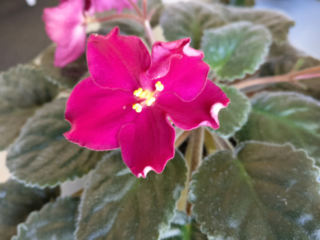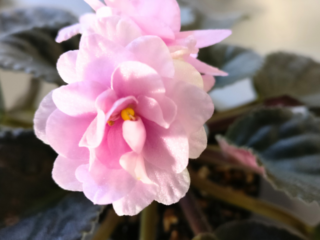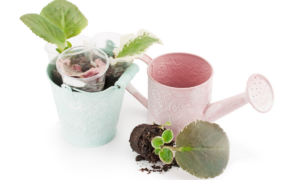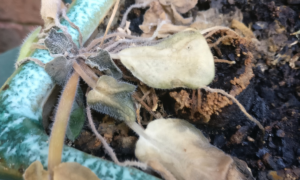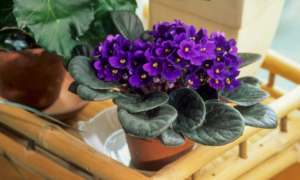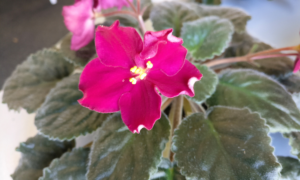Root rot is a common problem among African violets, and it can be very difficult to fix. Left untreated, root rot can quickly lead to death. Fortunately, with the right knowledge about what causes root rot in African violets as well as how to identify symptoms of disease and treat or prevent it from occurring again you can help ensure that your beloved flowers remain healthy! In this blog post we’ll discuss all aspects of fixing root rot in African Violets so you’re better equipped to identify and deal with the issue.
Table Of Contents:
- What is Root Rot?
- Symptoms of Root Rot
- Causes of Root Rot
- Treating Root Rot
- Preventing Root Rot
- FAQs in Relation to How to Fix Root Rot in African Violets
- Conclusion
What is Root Rot?
Root rot is a fungal disease that affects the roots of African violets, causing them to become soft and mushy. It can be caused by overwatering or poor drainage, leading to waterlogged soil. The fungus responsible for root rot is called Pythium ultimum, which thrives in moist conditions and feeds on the plant’s roots.

Once an African violet has been affected by Root Rot, it may never fully recover; thus, prevention is always better than cure.
Root rot is a common issue for African violets and can cause serious damage to the plant if not treated. To prevent this, it’s important to understand the symptoms of root rot so you can take steps to fix it.
Symptoms of Root Rot
The most obvious symptom of root rot is wilting leaves and stems. You may also notice discoloration of the foliage, with yellowing or brown spots appearing on the leaves.
The roots are usually affected first when it comes to root rot; they will appear black or brown in color and feel soft when touched. This indicates that the fungus has already started to break down the tissue within them. In some cases, you may even see white mold growing on top of the soil around your plant’s roots.
Another sign of root rot is stunted growth; this happens because the fungus prevents water and nutrients from reaching all parts of your plant, resulting in slow development over time. Additionally, you may find that new growth appears weak or distorted compared to healthy growth elsewhere on your African violet plant.
Finally, one last indication that your African violet might have root rot is an unpleasant smell coming from its soil; this could be a sign that bacteria have begun breaking down organic matter within it due to lack of oxygen caused by excessive moisture levels in its environment. If any of these symptoms sound familiar then you should take action immediately as further damage can occur quickly if not treated properly.
Causes of Root Rot
Root rot in African violets is caused by fungi that attack the plant’s roots and can cause serious damage if left untreated. The most common causes of root rot are overwatering, poor drainage, lack of air circulation around the roots, too much fertilizer or a buildup of salts in the soil.
Overwatering is one of the most common causes of root rot in African violets. When plants are watered too often or with too much water at once, it can lead to an accumulation of moisture around their roots which encourages fungal growth and leads to root rot. To prevent this from happening, make sure you only water your plants when they need it and use well-draining soil so excess water can easily drain away.
Poor drainage is another major cause of root rot as stagnant water will accumulate around the plant’s roots leading to fungal growth and eventual death if not addressed quickly enough. Make sure you use pots with good drainage holes on the bottom and never let them sit in standing water for extended periods as this could lead to problems down the line.
.png)
Lack of air circulation around African violet’s roots can also be a contributing factor when it comes to root rot as oxygen deprivation will encourage fungal growth over time leading to rotting issues further down the line. Try using smaller pots with more open spaces between each pot so there is better airflow throughout your collection or consider repotting into larger containers every few years instead if needed.
Root rot is a common problem for African violets, but understanding the causes can help prevent it from happening in the first place. Now that we know what causes root rot, let’s look at how to treat it.
Treating Root Rot
Treating root rot requires removing any affected roots from the plant and repotting it into fresh potting mix with good drainage capabilities such as perlite or vermiculite mixed with peat moss at a ratio of 1:1:1 respectively (perlite : vermiculite : peat moss). Quite often, you will need to add perlite to commercial African violet potting mix in order to achieve this ratio.
Get rid of all the mushy roots so that you are left only with healthy stem.
Make sure not to over-water your new pot; keep it moist but not soggy so that oxygen can reach all parts of the soil easily.
Finally, to prevent future outbreaks make sure you plant your African violet in a container with plenty of drainage holes. Always wear gloves when handling infected materials such as mushy roots since they might contain harmful bacteria capable of infecting other healthy specimens nearby.
By treating root rot by pruning away affected parts, you can help your African violets to recover. Now let’s look at how we can prevent root rot in the first place.
Preventing Root Rot
Fortunately, there are steps you can take to prevent root rot from occurring in the first place.
Watering your African violet correctly is key to preventing root rot. Make sure that you water your plant regularly but not excessively; if the soil becomes too wet or soggy, this can cause root rot. When watering your plant, make sure that all of the excess water drains away from its roots so they don’t become overly saturated with moisture.
Using a potting mix with good drainage is also important for preventing root rot in African violets. If possible, use a soil-less mix specifically designed for growing these plants as this will help ensure proper drainage and aeration around their roots. Additionally, avoid using garden soil as this often contains bacteria and fungi which could lead to disease problems like root rot down the line.

Providing adequate air circulation around an African violet’s roots is another way to help prevent them from becoming infected by diseases such as root rot. This means avoiding overcrowding multiple plants together in one pot or container; instead give each one plenty of space so their leaves don’t touch each other when they grow outwards over time. Additionally, make sure that any containers used have enough holes at the bottom for proper drainage and aeration of their roots when watered regularly.
Finally, over-fertilizing or adding too much salt to an African violet’s soil can increase its susceptibility to developing diseases such as root rot due to poor drainage. To avoid this issue altogether, only use low-salt fertilizer products specifically designed for African violets and always check your tap water before use just in case there are unusually high levels of salts present.
FAQs in Relation to How to Fix Root Rot in African Violets
How do I know if my African violet has root rot?
Root rot occurs when the plant’s roots are exposed to too much moisture, causing them to become infected and die off. Signs of root rot include yellowing or wilting leaves, brown spots on the stem or leaves and a foul odor coming from the soil. If you suspect your African violet has root rot, check its roots for discoloration and softness; if they appear blackened or mushy then it likely has root rot. To prevent further damage, remove affected parts of the plant immediately and repot in fresh soil with good drainage.
Is it possible to save a plant from root rot?
Yes, it is possible to save a plant from root rot. The first step is to identify the cause of the root rot and take measures to correct it. This may include improving drainage in the soil, increasing air circulation around the plant, or reducing humidity levels. If caught early enough, you can also remove any affected roots and replant with fresh soil and fertilizers. With proper care and attention, your African violet should be able to recover from root rot.
How do you revive a dying African violet plant?
Reviving a dying African violet plant is possible with proper care. First, check the soil for moisture and water if needed. Make sure to use lukewarm water as cold water can shock the plant. If the leaves are wilting or yellowing, remove them from the stem and discard them. Trim off any dead roots and repot in fresh potting mix specifically designed for African violets. Place in bright indirect light and keep away from drafts or direct sunlight which can burn delicate foliage. Lastly, mist regularly to increase humidity levels around your plant which will help it revive faster!
Conclusion
With proper care and attention to detail, you can fix root rot in African violets before it becomes a major issue. Be sure to monitor your plants regularly for signs of distress and take action quickly if any symptoms appear. With some patience and dedication, you’ll be able to keep your African violets healthy and happy!

